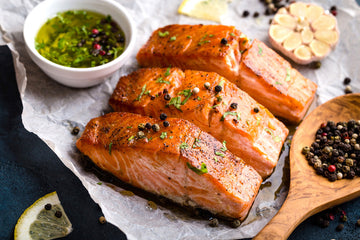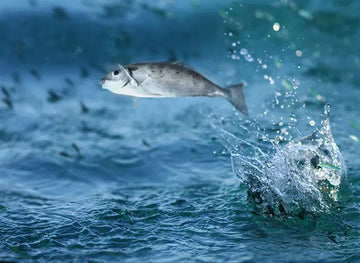Formalin
Fish is extremely perishable as a result of rapid microbial growth naturally present in fish or from contamination. To preserve the fish there are natural and synthetic preservatives used. A natural preservative for longer shelf life is salt but adding salt can alter the taste of the product (Curing method). Synthetic preservatives are widely used in fish storage to extend shelf life and maintain quality and safety is the use formalin. http://rb.gy/s4a58
Why traders tend to adulterate fish with formalin?
- The underlying motive of using formalin on fish (either as a dip or through ice laced/or made with formalin as an ingredient) is:
- to extend the storage life of fresh or chilled fish
- to artificially improve the sensory attributes i.e. appearance, so as to give a facade of fresh fish.
- In most cases, dishonest traders use formaldehyde to prevent spoilage and keep fish marketable condition.
- Unavailability of good quality ice at harvest centers, inadequate insulation during domestic transport and lack of warehousing facility for bulk storage of fish are some of the compelling reasons for rampant use of formaldehyde in domestic fish marketing.
- The added formaldehyde content in fish will decrease during storage due to loss along with ice-melt water, but cannot be fully removed.
- As this solution is widely available in market, fish traders and suppliers have easy access to this chemical for adulteration.
Side effects of Formalin in human body.
Ingesting large amounts of formaldehyde can generally cause severe abdominal pain, vomiting, coma, renal injury, and possible death. The International Agency for Research on Cancer (IARC) of WHO classifies formaldehyde as "carcinogenic to humans", with sufficient evidence for causing nasopharyngeal cancer in humans.
Advice to Consumers
- Wash all food thoroughly with running tap water, as formaldehyde is soluble in water and washing can aid the removal of formaldehyde, to a larger extent.
- Wash your fish thoroughly before cooking and discard the water.
- Cook your fish thoroughly to an internal temperature of 75°C or above, as heat from cooking can also aid the removal of formaldehyde, because it is a volatile. Also, check the flesh to see whether it has turned opaque and can be separated easily.
- After repeated washing also, if there is any kind of obnoxious smell or texture, report to concerned food safety authorities.
- Consumers can check the fish for adulteration using rapid detection kit “CIF Test" developed by ICAR-CIFT. The method is simple, rapid, and consumer friendly, detects only the added formaldehyde present in the fish.
How does VTF ensure that the product reaches the end customer in its most safe, hygienic, fresh, and nutritious form with “Zero Adulteration”
- 100% Traceability - of our products (fish) i.e., where and when it is harvested, where and when the fish is processed and packed & when does it deliver to the customer’s doorstep. ( http://rb.gy/eltdm ).
- Cold Chain Transportation (0-4°c), to deliver safe and nutrient-rich food to your doorstep without “Zero Decay”. ( http://rb.gy/7vc2c and http://rb.gy/grbrw ).
- At VTF, we promise to the Customers that the product is “Zero Adulterated” & ensures the Customer's health & Safety – it can be achieved through our 100% Traceability and Cold Chain Transportation (0-4°C) Systems.
- No hormones / No pesticides / No heavy metals / No additives
- Fresh, odorless, ready to cook & rich in nutrients.
We Ensure Food is Safe to Consume for Nutrient to be absorbed into our Body for a Better Health and Better Future.
Regards
VTF





